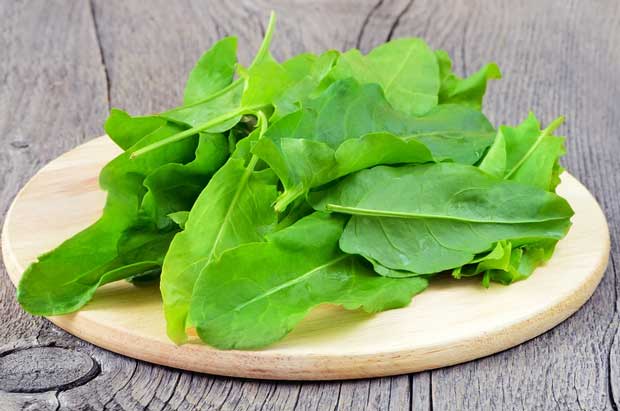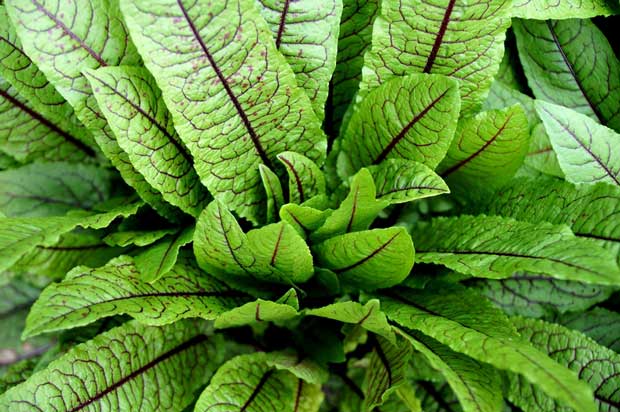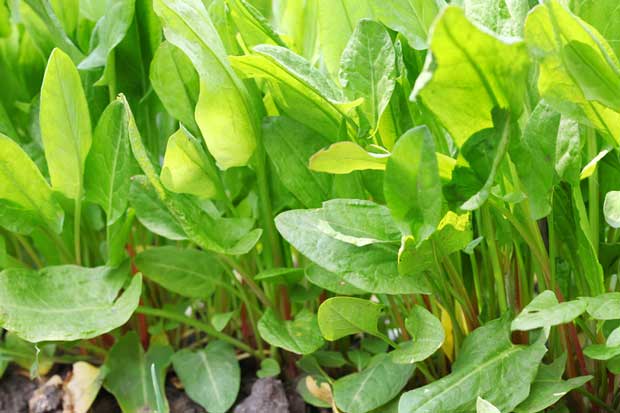How to grow sorrel: Why you need to plant this lemony perennial

Sorrel is a robust and persistent sort that grows like a weed (which it’s not) and can be used to tart up your tastebuds in a variety of dishes.
Words: Kristina Jensen
Sorrel is a plant with evergreen tenacity and tasty leaves that are always ready to pick. It has been a mainstay in my garden forever, albeit that I move fairly regularly: I either collect a seed or four to germinate, or dig up a piece of the root and replant it – and off it grows again. Although sorrel can go to seed twice a year, once a plant is established, all it needs is a chop back and a bit of compost every now and then to keep it healthy. The red-veined variety is one of my favourite salad greens with its uniquely patterned leaves.

Red-veined sorrel
The sorrel I am speaking of here, the one most commonly used for salads and cooking, is Rumex acetosa, also known as sour dock. There is another popular rounder-leaf variety known as French sorrel (Rumex scutatus). Both have a distinctive lemony flavour, ideal for pesto, smoothies, salads and soups. Sorrel can be used, cooked, in place of spinach in many recipes. It can also add the citrus tang to a dish to replace a lemon, especially in fish.
Used as a cure and preventative for scurvy for centuries, sorrel, like watercress and chickweed, is high in vitamin C. It is known to remove excess fluid from the body and contains oxalic acid (which gives it the sour taste) so beware if you suffer from gout or heartburn — don’t overdo it.

Sorrel likes the cooler weather so it’s an ideal plant to get going in early March as it will happily provide leafy greens all winter long if situated in a well-drained, composted garden bed with plenty of sun. Come summer, it tends to bolt and produce long red stalks covered with masses of seeds which then have a habit of insinuating themselves hither and yon throughout your garden. Best to nip the flower stalks out and chop the plant right back to the ground. It will come away again just fine with a new crop of delectable young green leaves. Unless you are feeding an army, one or two sorrel plants is plenty and if you are limited for space, sorrel is quite happy to grow in a pot.
GROWING SORREL FROM SEED
Growing sorrel from seed is very easy. For a summer crop, sow in early September and for a winter crop, sow in early March. You can either start your plants off in a small punnet of good-quality seed raising mix, or sow them directly into a garden bed about 20cm apart. Keep an eye out for slug damage; they just love tender young leaves. Set a beer trap or use slug bait.
SORREL FROM A ROOT CUTTING
To grow sorrel from a piece of root, slide a spade or trowel down into the centre of the plant and carefully wiggle it back and forth until you can scoop one half of the plant and its roots out of the ground. Even a tiny piece of root will grow so you don’t need much to start a new plant. Dig a nice deep hole and add a shovel full of mature compost before repositioning the root cutting in your garden.
SHARING THE LOVE
Want to share your sorrel? Every couple of years in autumn, it’s recommended to divide established plants to avoid congested clumping. Pass these small sections on to friends and family and they can watch them spring up with increased vigour, shooting out masses of leaves for their culinary pleasure.
MORE HERE


